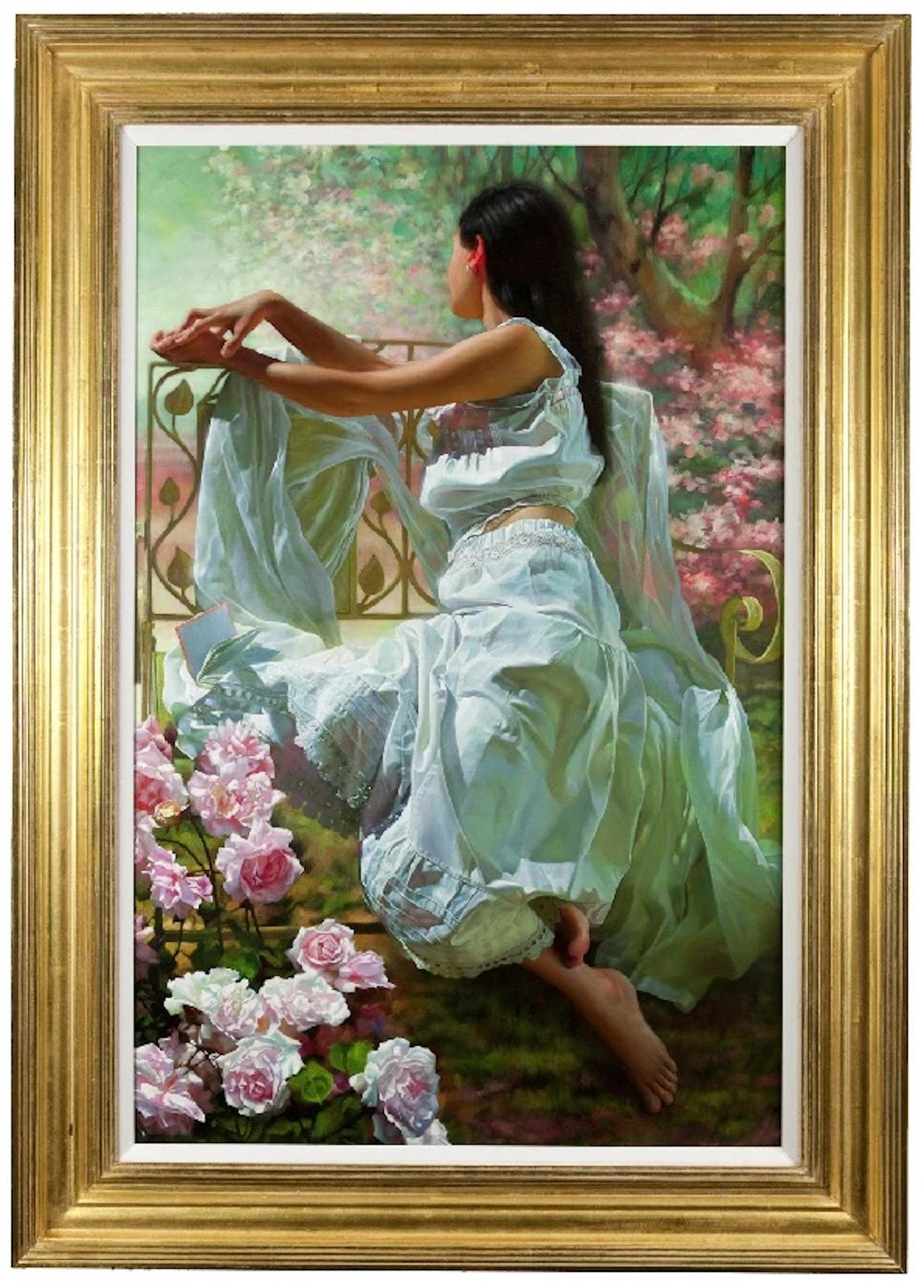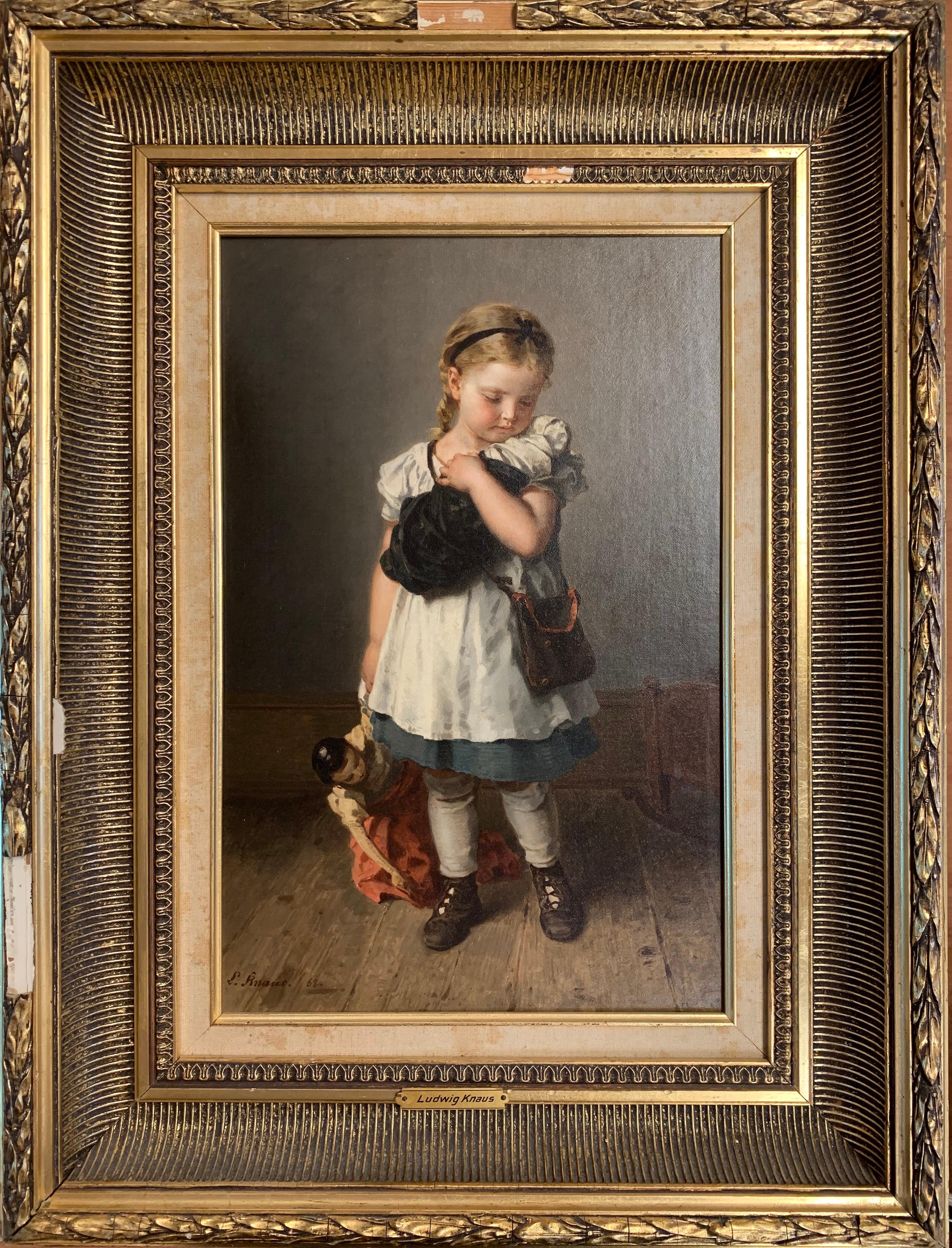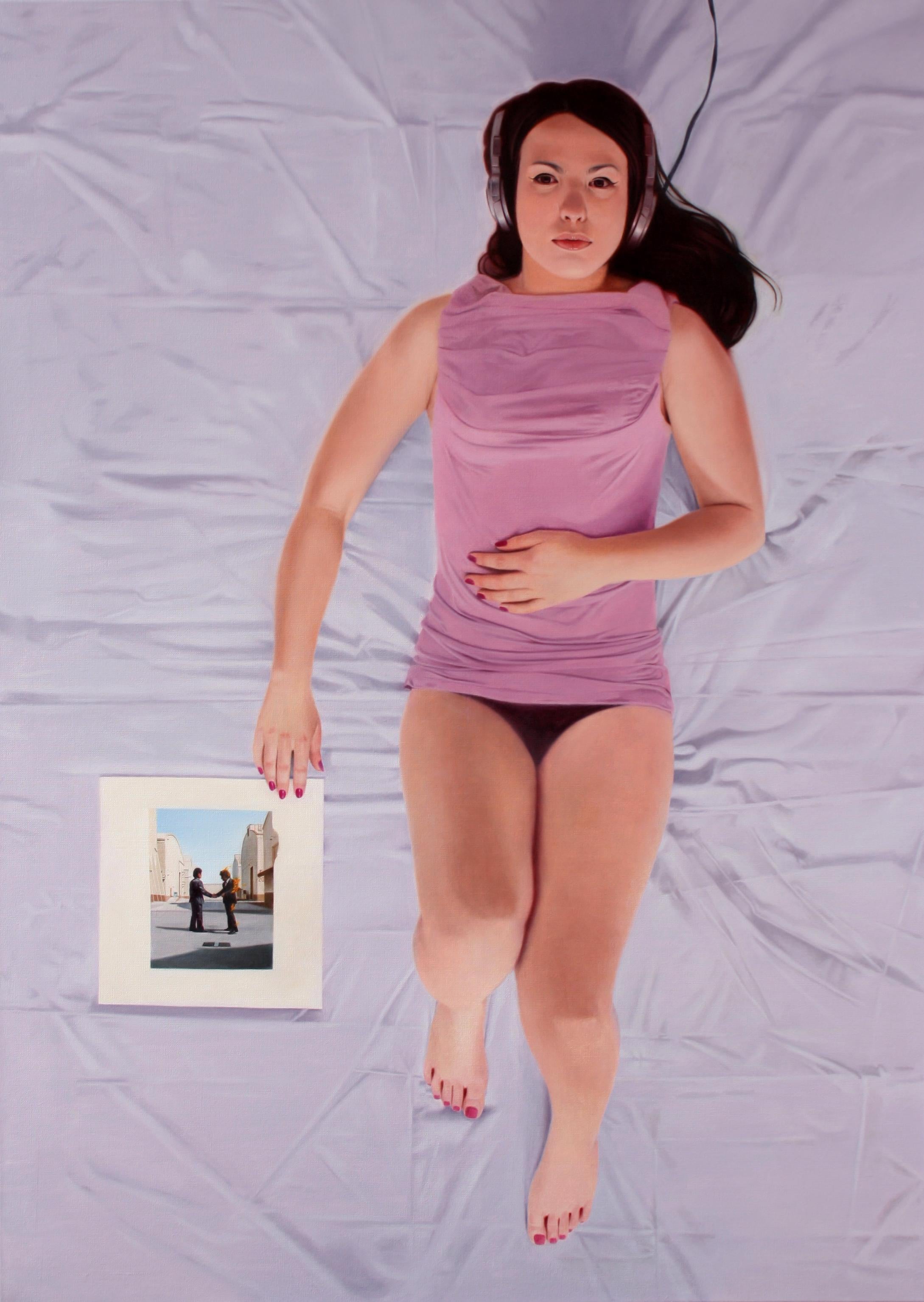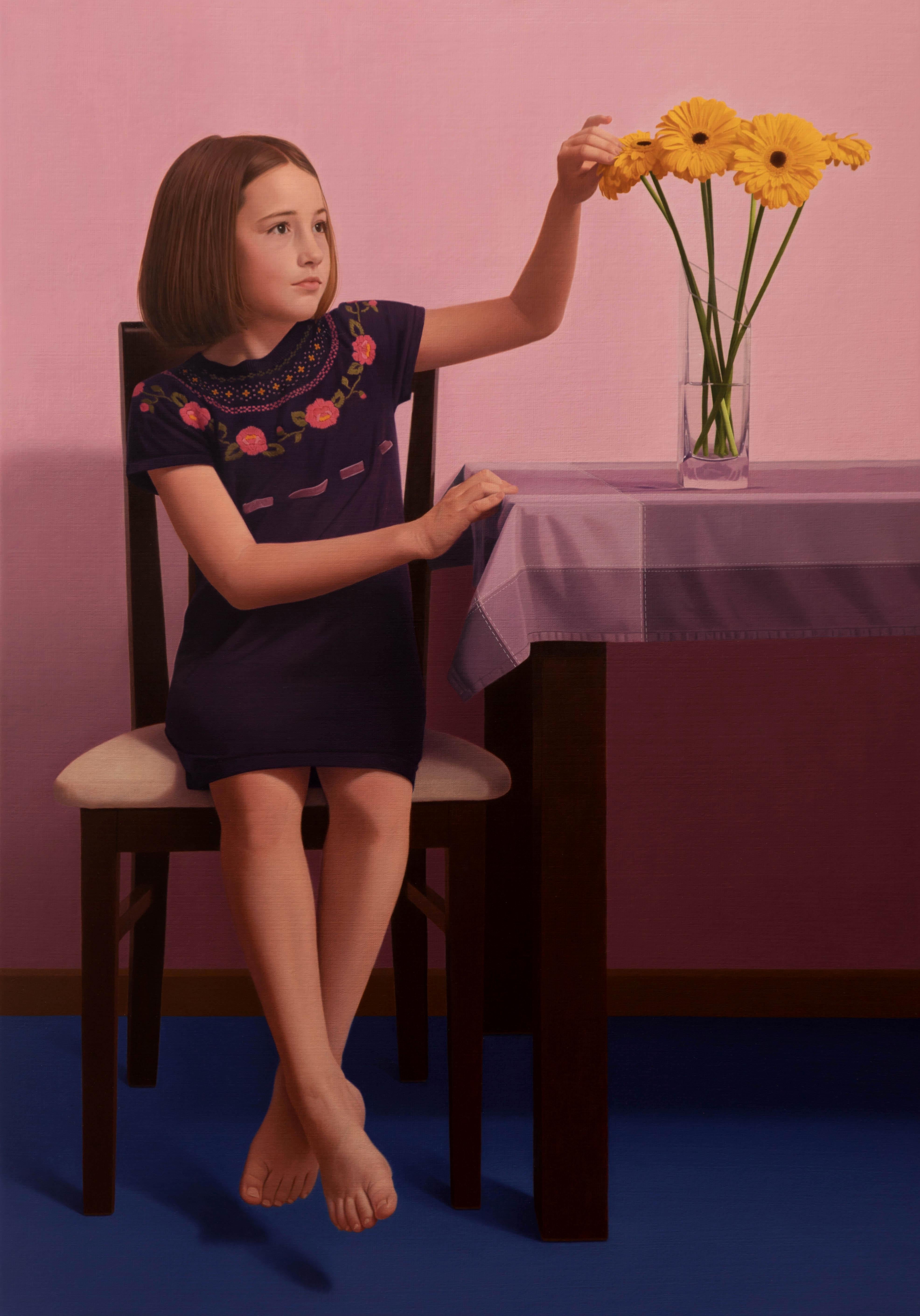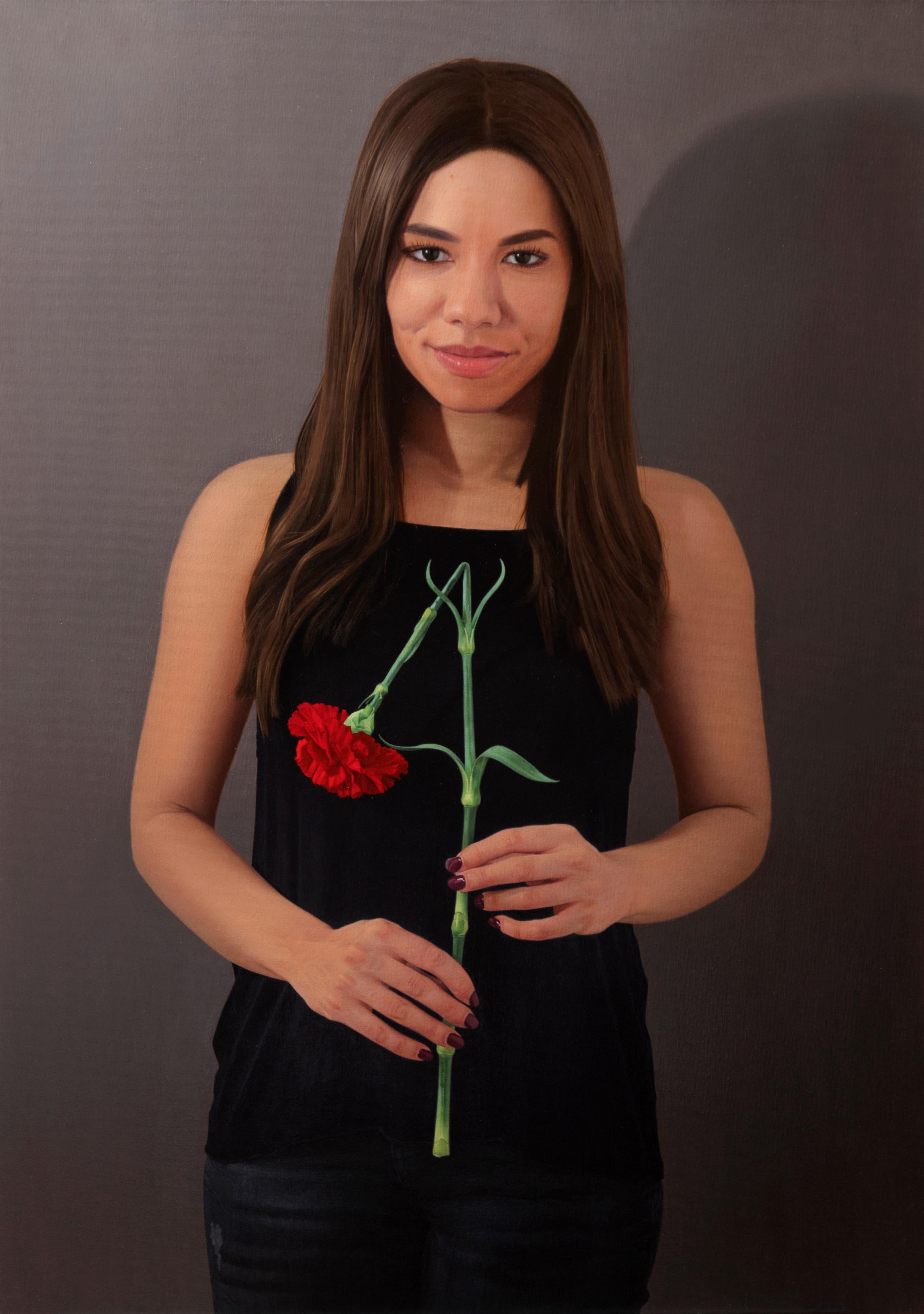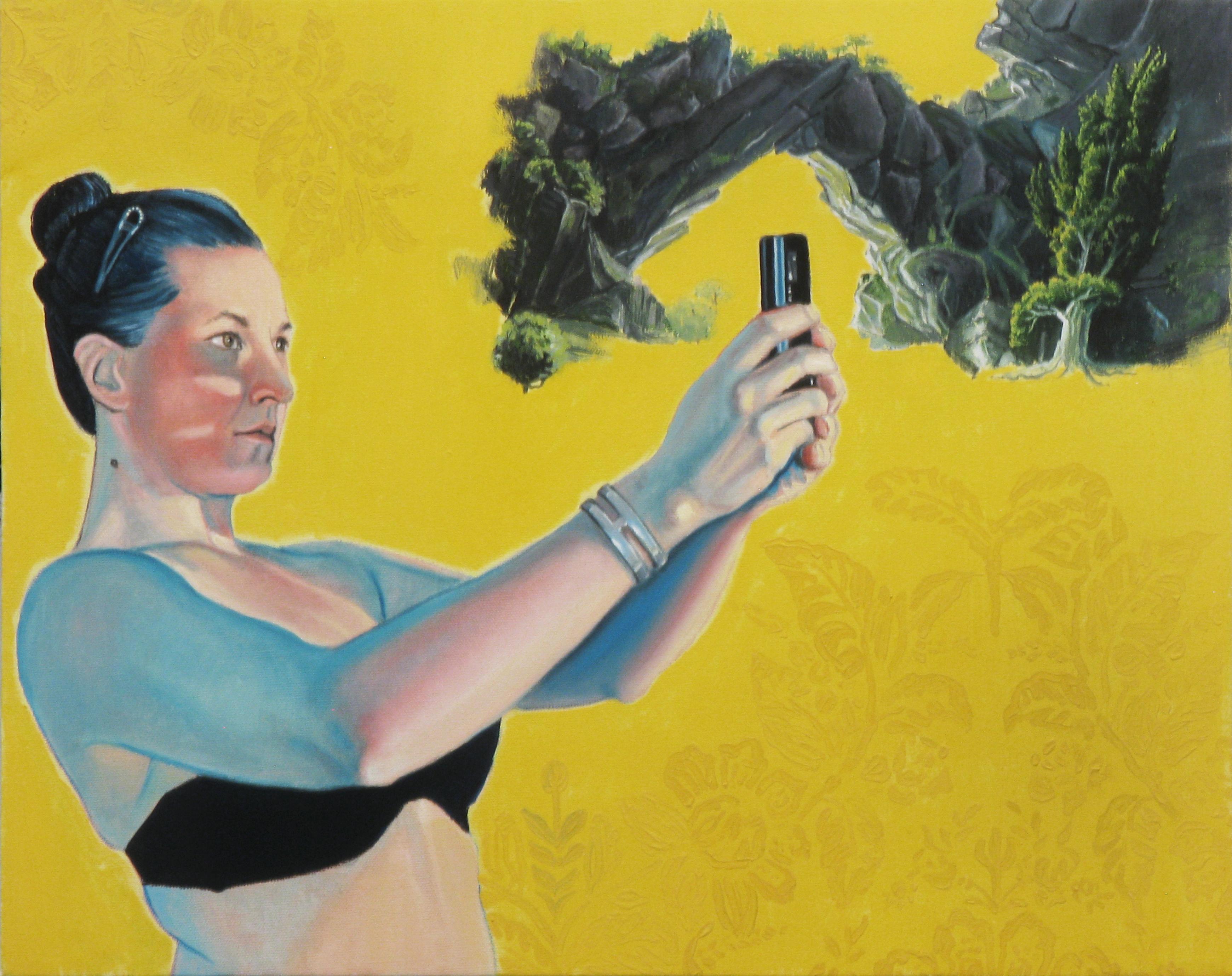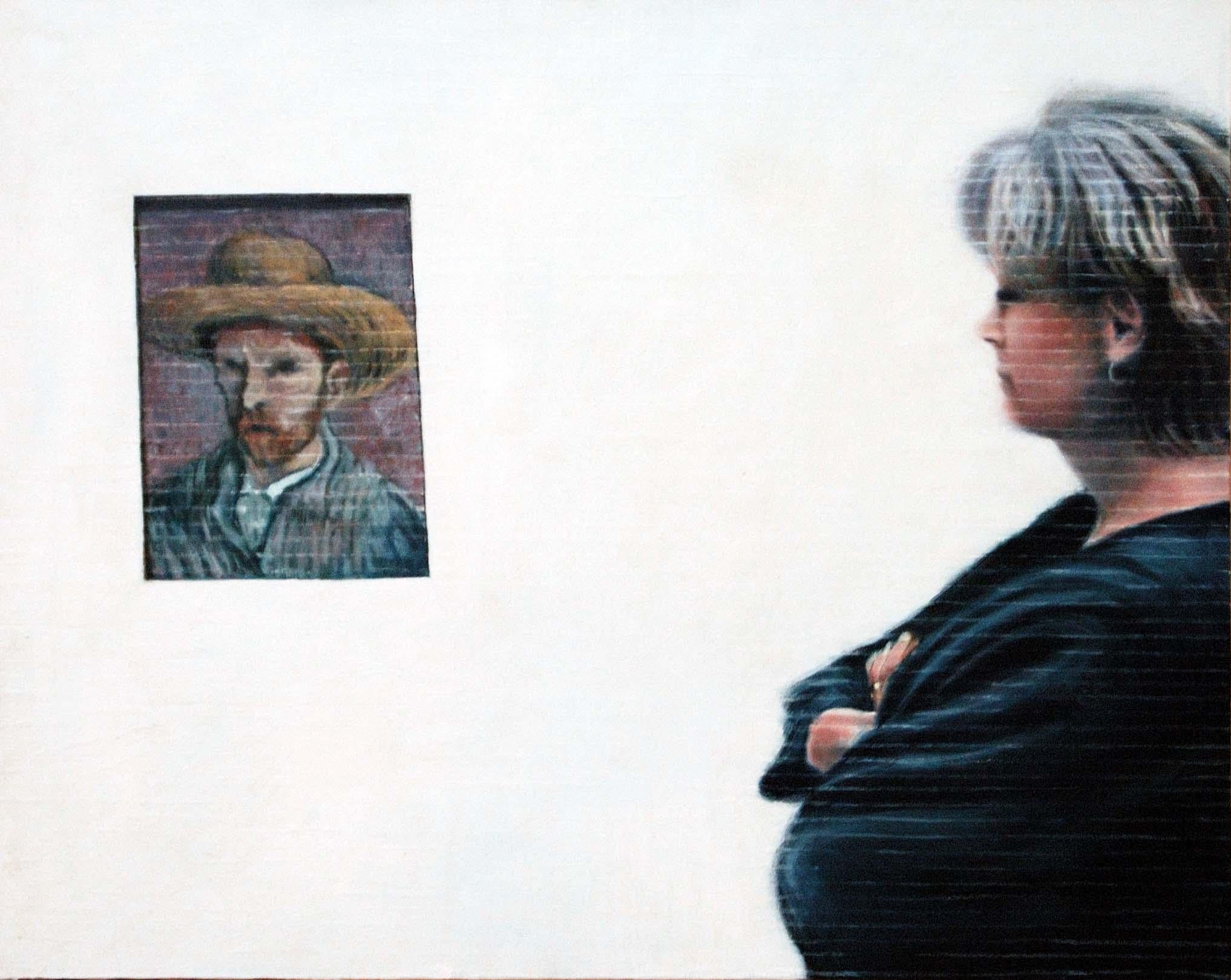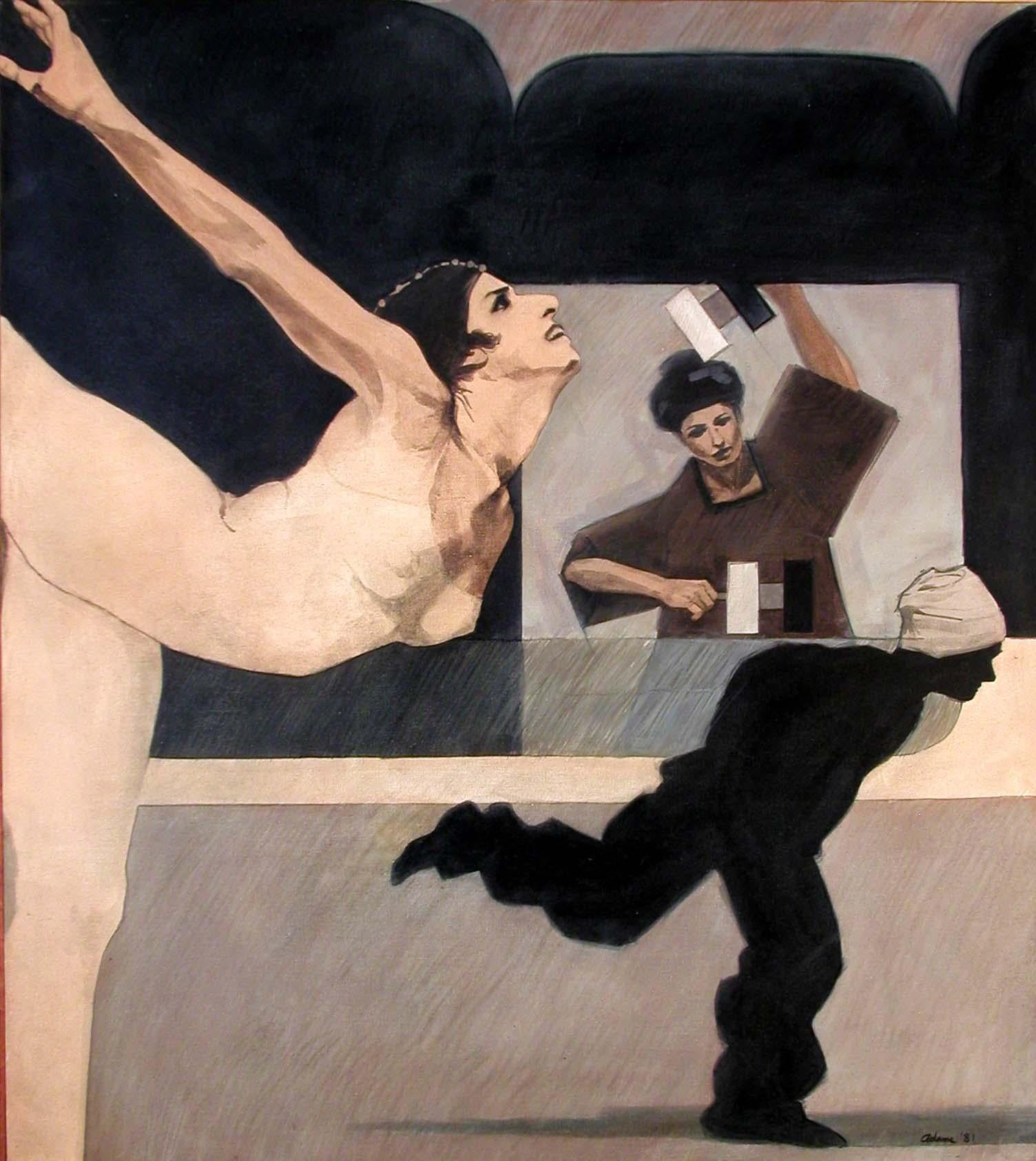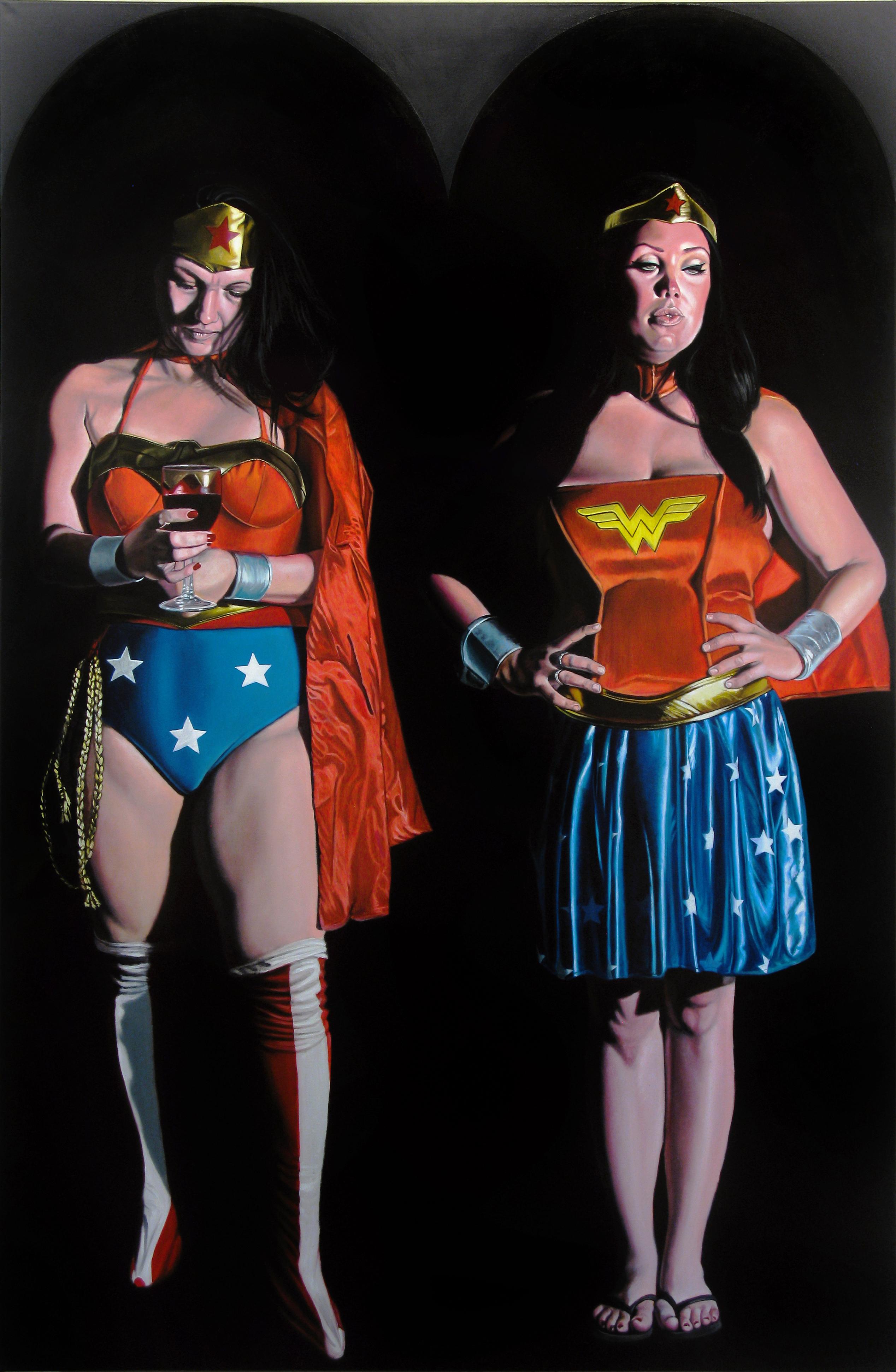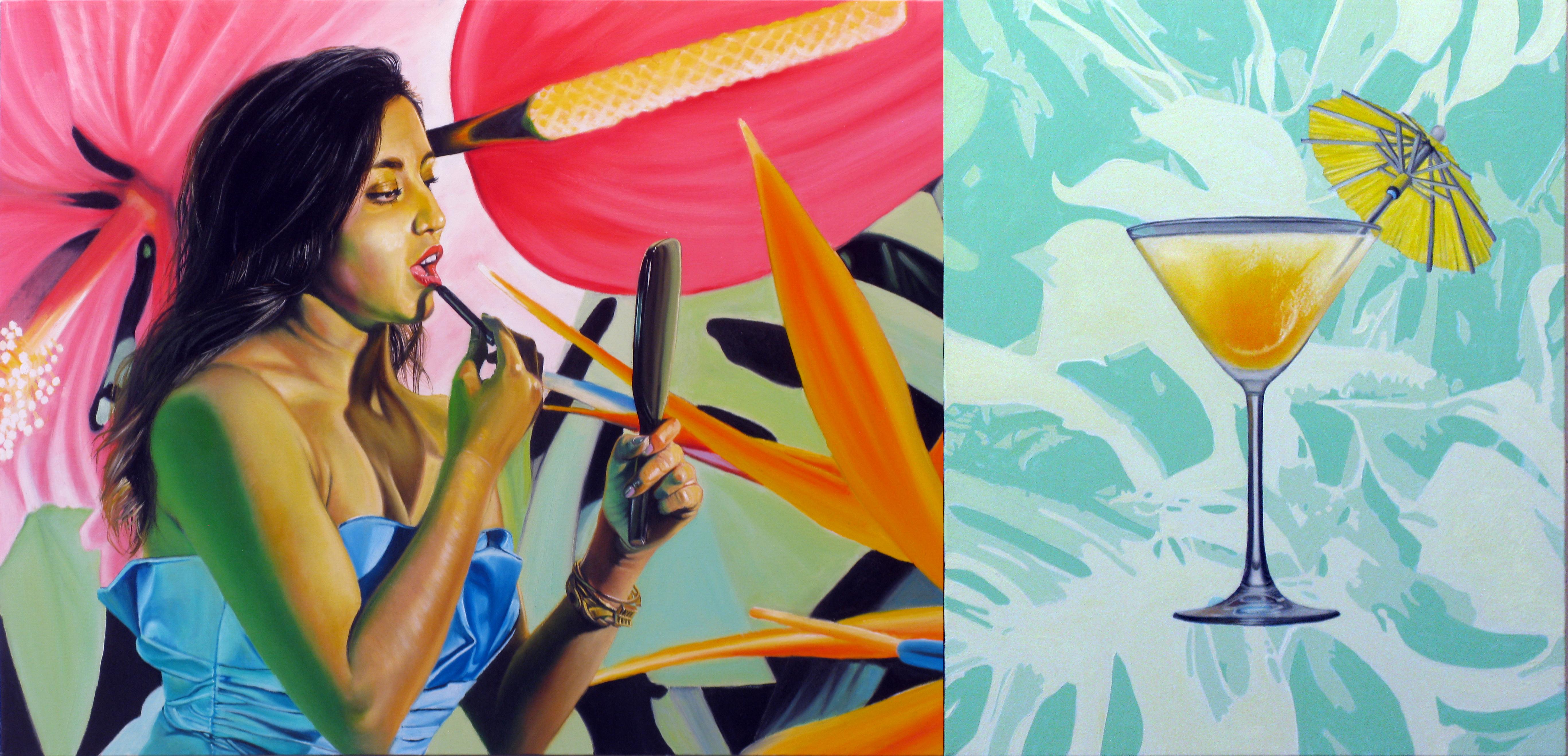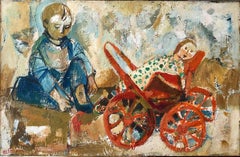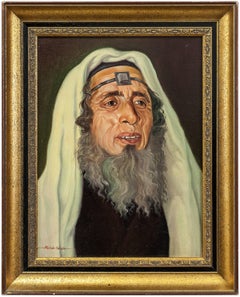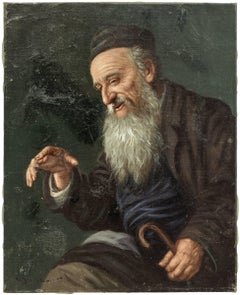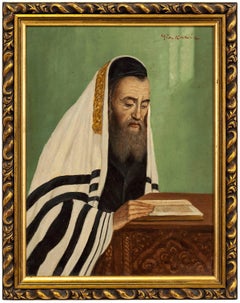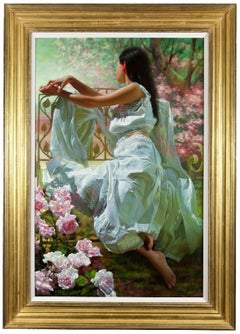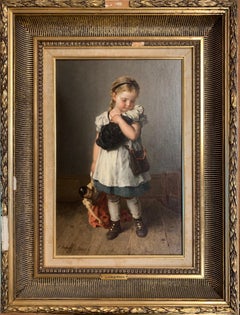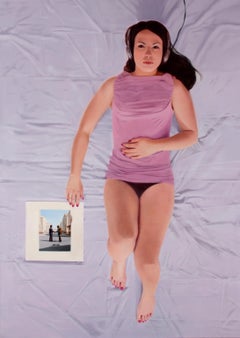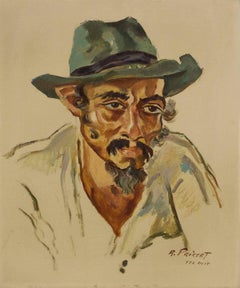
Yemenite Man, Tel Aviv, 1940's Palestine/Israel
View Similar Items
Want more images or videos?
Request additional images or videos from the seller
1 of 6
Raphael PricertYemenite Man, Tel Aviv, 1940's Palestine/Israel
About the Item
- Creator:Raphael Pricert (French)
- Dimensions:Height: 18 in (45.72 cm)Width: 15 in (38.1 cm)
- Medium:
- Movement & Style:
- Period:
- Condition:
- Gallery Location:Surfside, FL
- Reference Number:1stDibs: LU3821839163
About the Seller
4.9
Platinum Seller
Premium sellers with a 4.7+ rating and 24-hour response times
Established in 1995
1stDibs seller since 2014
1,766 sales on 1stDibs
Typical response time: 1 hour
Authenticity Guarantee
In the unlikely event there’s an issue with an item’s authenticity, contact us within 1 year for a full refund. DetailsMoney-Back Guarantee
If your item is not as described, is damaged in transit, or does not arrive, contact us within 7 days for a full refund. Details24-Hour Cancellation
You have a 24-hour grace period in which to reconsider your purchase, with no questions asked.Vetted Professional Sellers
Our world-class sellers must adhere to strict standards for service and quality, maintaining the integrity of our listings.Price-Match Guarantee
If you find that a seller listed the same item for a lower price elsewhere, we’ll match it.Trusted Global Delivery
Our best-in-class carrier network provides specialized shipping options worldwide, including custom delivery.More From This Seller
View AllIsraeli Oil Painting Ruth Schloss Child, Doll, Wagon, Kibbutz Social Realist Art
By Ruth Schloss
Located in Surfside, FL
Large magnificent colorful Ruth Schloss oil painting of a child with a wagon with a doll or a baby in a carriage stroller.. Signed in Hebrew
size measures 31x43 with frame , 23x35.25 without the frame. (this is being sold unframed).
Ruth Schloss (22 November 1922 – 2013) was an Israeli painter and illustrator who mainly depicted neglected scenes such as Arabs, transition camps, children and women at eye-level as egalitarian, socialist view via social realism style painting and drawing.
Schloss became Israeli painting’s sensitive, conscious, remembering eye.
Ruth Schloss was born on 22 November 1922, in Nuremberg, Germany, to Ludwig and Dian Schloss, as the second of three daughters of bourgeois assimilationist Jewish family well-integrated into German culture. As the Nazis came into power in 1933, her family immigrated to Israel in 1937, and settled in Kfar Shmaryahu, then an agricultural settlement. Schloss studied at the Department of Schloss graphic design at "Bezalel" from 1938 to 1942 alongside Friedel Stern and Joseph Hirsch. She was a realistic painter who focused on disadvantaged people in the society and social matters as an egalitarian. Her realism was thus an “inevitable realism,” motivated by an inner necessity: the need to observe reality as it is.
Her painting repeatedly addressed the door pulled from its frame, employing drawing’s unique ability to stop time and prolong the image’s persistence in the retina, she repeatedly committed to paper - in a matter-of-fact, non-evasive manner devoid of mystery – man’s tendency to generate chaos, suffering and pain.
Throughout her life, Schloss remained minimalist. Painting about human fate was the main subject of her artworks. Her natural inclination was to describe the darker aspect of human existence.
1930s
The Schloss household was characterized by open, liberal spirit, in keeping with the parents’ progressive views. It deeply influenced Ruth’s mental development, as she learned to tie culture and art with sensitivity towards the weak and underprivileged.
In Jerusalem, she joined a commune of Hashomer Hatzair in which she shaped her socialist views, which she maintained throughout her long career.
1940s
In this period she mainly depicted landscapes of kibbutz and wretched women living hard life, children in huger, older people, refugees. After completing her art studies, Schloss joined a training group at Kibbutz Merhavia in 1942, and after two years moved to Karkur region, the nucleus established Kibutz Lehavot Habashan in the Upper Galilee. Through this time, she fell in love with the surroundings and drew landscapes. They are simple and direct with fresh, lucid lines. These paintings were selected as the main works of her first exhibition in 1949.
In early 1945, Schloss started to draw illustrations in the children’s magazine Mishmar Leyeladim, and designed the logo of Al Hamishmar, the paper’s new name in 1948. In 1948, upon the founding of Mapam (United Workers’ Party), she designed her party’s emblem, which became a well-known icon. She kept working as an illustrator for Mishmar Layeladim until 1949.
"Mor the Monkey" project yielded financial profits and this income was used for a study trip to Paris for two years. She was succesfull as illustrator however, she had inner conflicts of her identity as witnessed painter toward neglected class in Israeli society.
First Exhibition at Mikra-Studio Gallery, 1949
She presented forty drawings on paper in her first solo exhibition, representing a selection of the themes of kibbutz landscape, its lifestyle. Schloss confidently proposed her direction through simplicity without using colors in her drawings.
1950s
Between 1949 and 1951, she studied at the Académie de la Grande Chaumière in Paris.
She began working in oils, with which she continued throughout the 1960s.
The exhibition “Back from Paris” opened in November 1951 at Mikra-Studio Gallery .
In 1951 she married Benjamin Cohen, who served as chairman of the national leadership of Hashomer Hatzair Workers Party in Tel Aviv. He was a theoretician and a man of principle, highly esteemed by its leaders who became a professor of history at Tel Aviv University. In 1953, following the Mordechai Oren affair and the publication of Moshe Sneh 's followers from Kibbutz Artzi, she and her husband left the kibbutz and moved to the agricultural farm, Kfar Shmaryahu, where she lived until her death.
At a certain point in Israeli history, segments of the socialist movement felt that Israel should become part of the Communist bloc, rather than seek the support of the western world. Because the Schloss couple support of Moshe Sneh’s left-wing party, they had to leave the kibbutz.
She loved to depict ordinary women as figurative on her painting without hiding or making up anything. The poet Natan Zach wrote about her works in 1955: “Her motto remains that which has been all these years: life as it is, without bluffing."
Schloss’s “Pietà” (1953) became a universal cry expressing the pain of mothers on either side of the divide. In the late 1950s, she was the mother of two daughters. When she drew her daughters, unlike the universal babies she depicted, naked and with clenched fists, the painting of her children employed babyish sweetness to the full in a quiet, peaceful and heart-stirring filling rather than urgency. She also painted children in the transition camp and Jaffa in the 1950s and 1960s.
1960s-1980s – The period of Studio in Jaffa
Schloss painted at a studio in Jaffa from 1962 till 1983. In this time, she turned her interest to people around her more than kibbutz – the children, mothers, and poor workers, the alleys and houses. She opened the space to the street and its dwellings, built interactions around it, and was nurtured by the presence of the outside in her work.
1960s Schloss familiarized to an Arab woman, Nabava, lived in poor. Schloss returned to painting images of old people later, and she called her painting figurative elderly people in the old age homes “waiting”.
In the late 1960s, Ruth discovered acrylic paint and never turn back to oil painting.
In 1965 Schloss devoted a series “Area 9 (1965)”, dedicated to the demolition of Israeli-Arab houses and the expropriation of the land, and carried a definite socio-political messages. The series was exhibited at Beit Zvi, Ramat Gan, in 1966. She was the only artist who addressed the result of the Six-Day War immediately afterward. In 1968, Schloss and Gansser-Markus presented “Drawing of War” in Zurich gallery. She expressed the war as an ultimate expression of destruction and ruin, regardless of victors and vanquished.
1970s In late 1970s Schloss began printing the selected photograph directly on the canvas, posterior reworking it in acrylic. She decided to print her work at Har-El Printers in Jaffa, and these became the surface of her painting. This technique was mainly adopted in two large series: Anne Frank (1979-1980) and Borders (1982). Through this technique she placed the figure of elder Frank next to that of the famous young Frank, and released it at the exhibition at Bet Ariela Cultural Center, Tel Aviv, in 1981. The series touched upon the Nazi Holocaust.
1980s The Lebanon War raised the question of “The Good Fence” and the effect of the war. She dedicated a large series Boarders, one of the most powerful image linked to the series is the figure of Yemenite woman raising her hand. She was the first to raise the Black Panthers demonstration to the level of a social icon. In the 1980s and again in 2000, the Intifada uprisings also led Schloss to the easel to render a good number of representational and symbolic works that in their way denounced Israel's political and military actions.
1990s – 2000s Ruth Schloss never had an exhibition in a major Israeli museum. Her works were presented in private galleries and small museums. The main museums, the Tel Aviv Museum of Art and the Israel Museum, included her works only in group exhibitions, and only in 1991 was her retrospective exhibited at the Herzliya Museum.
In the 2000s, Schloss’s metaphors turned into animal kingdom and Bedouins in the south. A huge rhinoceros, birds of prey, and other "bad animals," as Cohen Evron, daughter of Ruth, calls them and "I connected this to the Nazis," said Schloss. Schloss' work after she didn't find human expression able to transmit the endless cruelty she saw in Israel's political mentality.
Schloss also continued to follow and collect documentary photographs of destructions of houses from the war, the Intifada, the sequence of her work about ruin from 1949 to 2005, was a cumulative testimony about the painful history of Israel and Palestine.
In 2006, a large retrospective exhibition of her work was presented at the Museum of Art in Ein Harod, curated by Tali Tamir.
Education
1938-41 Bezalel Art Academy, Jerusalem, with Mordecai Ardon
1946 painting course for Kibbutz Artzi artists with Yohanan Simon and Marcel Janco
1949-51 Académie de la Grande Chaumière, Paris
Awards and recognition
1965 Silver Medal, International exhibition in Leipzig, Germany
1977 Artist-in-Residence, The Cité Internationale Universitaire de Paris
Selected solo exhibitions
2004 “Micha...
Category
Mid-20th Century Realist Figurative Paintings
Materials
Canvas, Oil
Rabbi with Tefillin, Judaica Portrait
By Sandor Molnar
Located in Surfside, FL
Sandor Molnar began his studies at the Hungarian Academy of Fine Arts in 1955. His Studio at the Academy was the scene of friendly get-togethers and intellectual workshops from 1958 ...
Category
20th Century Realist Portrait Paintings
Materials
Oil
Untitled, Rabbi Smiling, Judaic Oil Painting, Early 20th Century
By Konstanty Szewczenko
Located in Surfside, FL
Konstanty Swewczenko (1910-1991), signed oil Judaica Oil Painting, Polish, c.1960
Konstantin Shevchenko studied at the Institute of Fine Arts in Warsaw in the years 1927 - 1928.
Then, in 1932 he studied painting under the guidance of Kowarski and Pruszkowski at the Warsaw Academy of Fine Arts.
Practiced easel painting, mostly portraits, genre scenes. Among others, a portrait Moscicki, Rydz - Rydz, and after the war Rokossowski.
He worked as a set designer. In the years 1934 - 1935 was production designer Variety Theatre.
He collaborated with publishing houses with illustrations. He exhibited in Warsaw, Vienna, New York. In 1947 he took part in Exhibition Independent Artists Group) and abroad (solo exhibition at the Gallery G. Tomalsky in New York, 1964) .
His works are in the collection of the Museum of the Polish Army.
Category
20th Century Realist Portrait Paintings
Materials
Oil
Rabbi in Prayer
Located in Surfside, FL
20th century Judaica realist oil portrait, synagogue interior.
Category
20th Century Realist Portrait Paintings
Materials
Oil, Board
$1,100
Polish Judaica Portrait of Hasidic Rabbi Shtetl Tailor Oil Painting
Located in Surfside, FL
Older, realistic portrait of an older Jewish shtetl tailor by Polish artist. Here the artist conveys a sense of quiet grandeur through the eyes of his subject and the way it's rendered. Part of a distinguished European lineage of Jewish genre...
Category
20th Century Realist Portrait Paintings
Materials
Canvas, Oil, Board
Judaica Market Scene, Shuk, European Hasidic Rabbi Oil Painting
Located in Surfside, FL
framed sight size 10 x 13.5 inches painting, framed to 15 x 19.
Impressionistic Realistic portrait of an older rabbi visiting the marketplace. Children playing. Here the artist conveys a sense of quiet grandeur through the eyes of his subject and the way it's rendered. following a distinguished lineage of Jewish genre...
Category
Early 20th Century Realist Portrait Paintings
Materials
Oil
You May Also Like
Portrait of Girl with Flowers by Andrei Belichenko & Maria Boohtiyarova
By Andre Belichenko
Located in Uppingham, GB
A Wonderful Oil on canvas by Andrei Belichenko & Maria Boohityarova. Two excellent Russian artists who have been exhibiting in France, their works are centred around exquisite detail...
Category
2010s Realist Portrait Paintings
Materials
Oil
Child with Doll
Located in Saint Augustine, FL
Artist: Ludwig Knaus (1829-1910)
Title: Child with Doll
Medium: Oil on Canvas
Year of Work: 1868
Nationality: German
Dimensions: Framed 24.5 x 18.13" U...
Category
1860s Realist Portrait Paintings
Materials
Canvas, Oil
FRANCOIS VAN SEVERDOCK. Portrait of Eugène de Zereso de Cejada. Oil on panel
By Francois Van Severdonck
Located in Paris, FR
Portrait of Eugène de Zereso de Cejada. Oil on mahogany panel.
Eugène de Zereso de Cejada was a Belgian politician and Baron.
Category
Late 19th Century Realist Portrait Paintings
Materials
Oil
Wish You Were Here - Modern Figurative Oil Painting, Realistic Girl Portrait
By Kamil Lisek
Located in Salzburg, AT
KAMIL LISEK (born in 1980) Studied under the guidance of prof. Maciej Świeszewski at the faculty of painting at the Academy of Fine Arts in Gdansk. He graduated with distinction obta...
Category
2010s Realist Figurative Paintings
Materials
Canvas, Oil
Gerberas - Contemporary Figurative Oil Painting, Realistic Little Girl Portrait
By Kamil Lisek
Located in Salzburg, AT
KAMIL LISEK (born in 1980) Studied under the guidance of prof. Maciej Świeszewski at the faculty of painting at the Academy of Fine Arts in Gdansk. He graduated with distinction obta...
Category
2010s Realist Figurative Paintings
Materials
Canvas, Oil, Linen
Vinyl - Contemporary Figurative Oil Painting, Realistic Girl Portrait
By Kamil Lisek
Located in Salzburg, AT
KAMIL LISEK (born in 1980) Studied under the guidance of prof. Maciej Świeszewski at the faculty of painting at the Academy of Fine Arts in Gdansk. He graduated with distinction obta...
Category
2010s Realist Figurative Paintings
Materials
Canvas, Oil
Recently Viewed
View AllMore Ways To Browse
Pamela Bianco
Pat Burnham
Pat Hearn
Patricia Mcbride
Paul Lipp
Paul Mccartney Lithograph
Paz De La Huerta
Pe Felix
Pegge Hopper Print
Peter Keefer
Peter Max Earth Day
Peter Max Kentucky Derby
Peter Max Mini
Peter Ruck Shaken
Peter Sculthorpe On Sale
Peterborough Cathedral
Pharrell Williams Vintage
Picasso 156 Series Etchings
